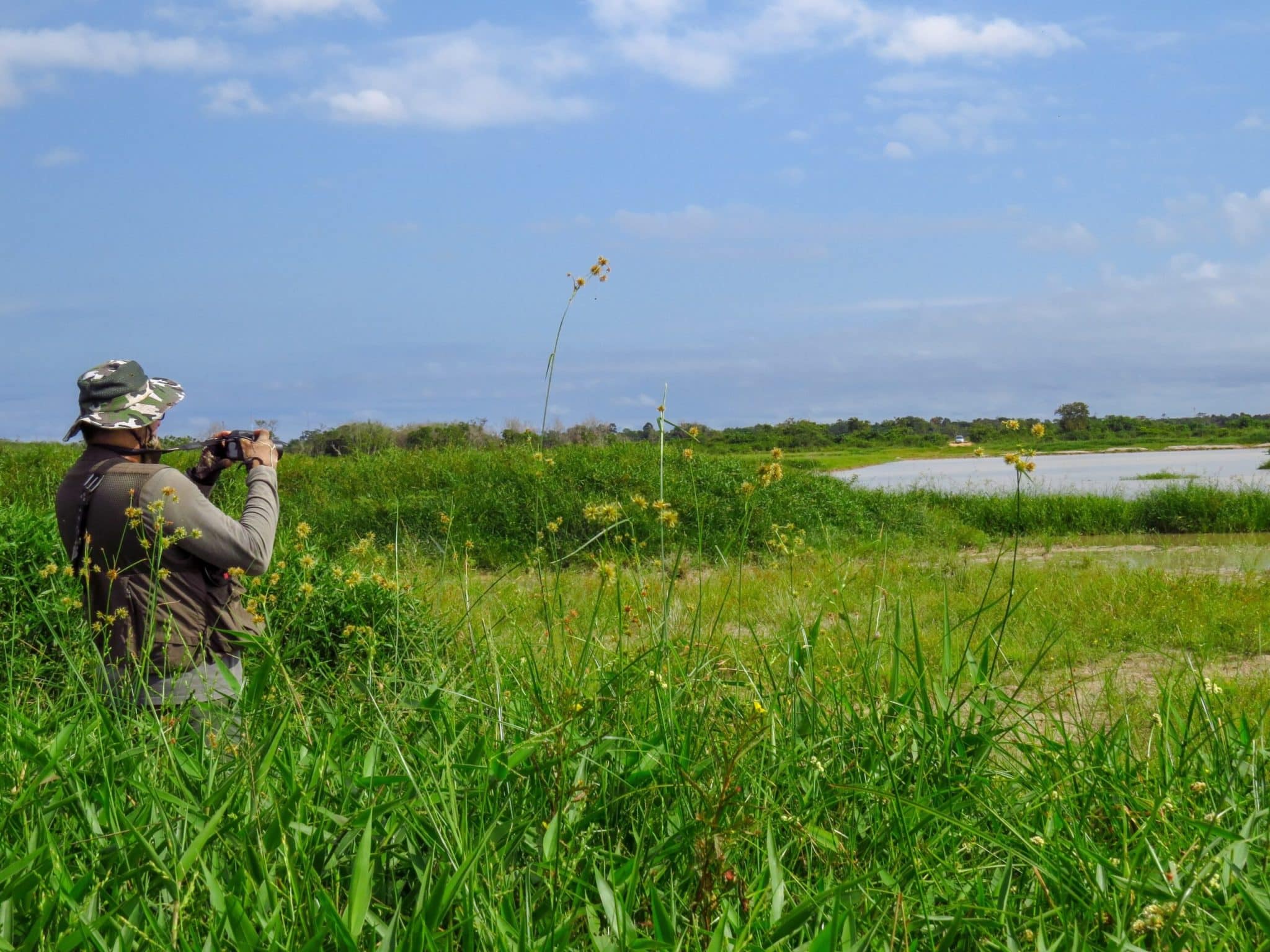Birdwatching is an activity for all ages. It rose to popularity in the UK during the Victorian era and has had an enduring appeal ever since, with hundreds of birdwatching societies functioning across the country. This scientific pastime is possible almost entirely due to the rise of binoculars, allowing bird watchers to observe common bird species from a distance. On many popular walks and trails you may find bird watching hides that bird watchers rest in to watch local species in their native habitat.
Why has bird watching been so enduringly popular?
Bird watching is a fantastic hobby for people of any age and continues to attract new fans each year. Helping people stay in contact with the natural world, watching wildlife in its native habitat is a family activity that encourages both children and adults to step outdoors.
Many bird watchers log their sightings and photographs of birds they have seen on websites, which are later used by conservationists and scientists to track migration patterns and the number of specimens that are passing through the UK. Many avid bird watchers are involved in conservation and when they go out bird watching they are very careful not to disturb any nesting birds.
Well over 200 bird species have been recorded by local bird watchers living and passing through on their migrations around Bewl water. Here are ten famous bird species to look out for on your walk around Bewl water.
1. Grey Heron
The grey heron is the largest heron in Europe, a tall grey bird with legs like stilts and a long neck. Herons are often identified by a distinctive black eye stripe and dropping feathers.
Herons are often quite difficult to spot on rivers, ponds and canals as they tend to stand still while hunting. They stand motionless watching the water until fish swim near to their feet and then strike quickly to pick up their prey. The movement of the strike can give away their position to watching ‘twitchers’. While their main prey remains fish, herons have been known to eat the occasional mouse or vole if they are too slow to escape.
Herons don’t migrate and so they can be seen all year. Even if you don’t see any herons while out walking, they may come to you. Herons are notorious for stealing goldfish out of decorative ponds!
2. Coot
Coots are black birds with a white beak and shield over their face. The saying ‘bald as a coot’ refers to the distinctive white patch that coots have next to their bill.
Similar to the moorhen, they are native to the UK and tend to live near wetlands and lakes. They have distinctive lobes on their feet which allow them to paddle in the water much like a duck. These water birds spend much of their time diving for food, mostly eating water vegetation while supplementing their diet with fish and eggs.
3. Great Crested Grebe
The great crested grebe is a water bird named for their elaborate plumage. Grebes have a bright orange crest around their faces that is particularly prominent during their nesting season. They engage in a mating dance in which they puff up their crest and shake their heads above the water.
The grebe’s bright and elaborate plumage almost led to its extinction in the UK, as the birds where hunted during the Victorian era so that their bright feathers could be used to decorate hats. At the bird’s lowest ebb there may have been as few as 32 surviving pairs in the UK. Successful campaigns against the use of these feathers led to some of the first bird protection acts in the UK and thankfully great crested grebe numbers have increased by a large amount since then.
4. Dabchick
The Dabchick (also known as the little grebe) is an excellent swimmer and diver that often eats fish and small invertebrates. They nest at the water’s edge and live mostly near lakes, but are occasionally spotted along the coastline.
5. Kingfisher
With beautiful blue and orange plumage, these are one of the UK’s most famous bird species. They live mostly around water and feed by diving from perches or from a hovering position into calm waters to catch small fish. Aside from fish, kingfishers also happily eat tadpoles and freshwater shrimp.
Sadly they are in decline in the UK and are particularly vulnerable to pollution. Due to their energy draining habit of hovering over the water, they must eat their own bodyweight in food each day to survive. At Bewl Water we endeavour to ensure the reservoir maintains the water quality that these birds require.
6. Tufted Duck
The tufted duck is a small diving bird with a blue bill, white side and distinctive yellow eyes. They have an obvious tuft on their head which is where their name comes from. These birds are migratory and have been seen in areas from America and Europe to Southern Asia.
They feed mostly on invertebrates and water plants. Their favourite food is freshwater mussels.
7. Canada Goose
A large goose with a black head and neck as well as distinctive white cheeks the Canada goose is hard to miss. They are very noisy birds, making a distinctive honking sound while flocking together. Canada geese are herbivores, they graze on grass and other available vegetation and can be seen in large numbers around Bewl water.
8. Great Spotted Woodpecker
A striking black and white bird with a distinctive flash of red on the back of the head, the great spotted woodpecker is an iconic bird. The drumming noise it makes as it marks its territory and creates nests inside of dead trees in heard throughout the UK, especially in spring.
Their excavation of dead trees and fallen logs is not only used to create nests, it is also done to hunt for food. Wood dwelling insects that burrow into dead and dry wood to feed are the preferred food for this species of woodpecker. You can listen to them in the extensive woodland around Bewl.
9. Swallows
With red faces, blue backs and white stomachs, swallows are a striking bird travelling thousands of miles each year. They can fly up to 200 miles each day when migrating, covering huge distances as they travel between their summer and winter homes.
Swallows are summer visitors to the UK as they mass through in their migration from Africa in April to build their nests and breed. Swallows feed almost entirely on flying insects swooping low over fields in the evenings to catch insects. Swallows move in flocks, creating incredible aerial displays as they swoop and dive.
10. White Stork
Storks are a large white bird, with a tendency to nest on house rooves throughout Europe, Storks have recently also been spotted at Bewl. Thanks to a rewilding project created on the Knepp Estate in Kent which aims to reintroduce Storks to the UK, a pair of storks hatched chicks in the UK in 2020. This was the first instance of storks breeding in the UK since 1414.
Reintroducing these wonderful birds to Britain after their 600-year absence, has been a triumph of rewilding attempts. This dazzling success may pave the way for more bird and animal species to be reintroduced throughout the UK.
Visit Bewl water to see these and many more beautiful birds in their natural environment.

